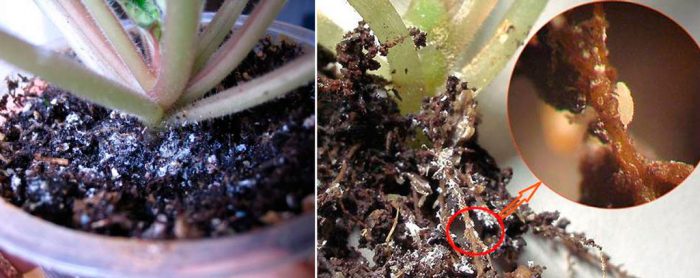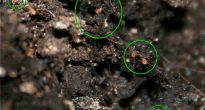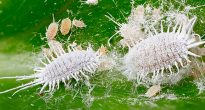There are some mealybug species that are able to feed on the parts of the plant that are underground, not just above it. Root worm (Rhizoecus falcifer) is white and can be 2 or 3 millimeters long. It usually settles on the root system of the plant in well aerated soil. It is not easy to detect this pest, and it is possible only during the transplant.
Content
External signs of defeat
The affected plant partially loses its turgor, it has a sluggish appearance. And if you water it, then there will be no reaction. The leaves turn yellow and deformed, and then die off. If the damage is very strong, then the pests can be seen on the root collar (the place where the stem passes into the roots). They can also be noticed during plant transplantation.
Prevention measures
During transplantation, you need to examine the earthen lump well for prevention purposes. This pest prefers to live in fast-drying and well-aerated soils. In this regard, the basal worm most often settles in a pot where a cactus or other succulent grows. It does not tolerate excess moisture in the soil. Therefore, for the purpose of prevention, it is necessary to constantly maintain the soil slightly moistened and this applies to all plants, even those that do not like excessive moisture.
How to fight
You will need to treat the infected soil 2 or 3 times, with the interval between treatments being 7-10 days. To completely get rid of the offspring of the mealybug, it will be necessary to completely wet the soil in the pot repeatedly.
Also, if you wish, you can apply a special preparation Apploud - this is a white powder that must be added directly to the substrate. It is dissolved in water, and the plant is watered abundantly with the resulting solution until water flows from the drainage holes.
You can also transplant the plant, while thoroughly rinsing the root system, and the pot must be sterilized. The plant must be planted in a new land. In the event that the plant is slightly affected, it is quite possible only to cut off the infected parts of the root.
After 1-2 weeks after the 1st treatment, it is recommended to carry out the second one.
Folk remedies in the fight against mealybug
A hot root bath has proven to be effective against this pest. You will need a large saucepan filled with water. Place it on the stove and bring the water to 55 degrees. Then you need to hang the cactus in such a way that its entire root system is immersed in liquid (up to the root collar).The plant should spend about a third of an hour in water. Then it is taken out and thoroughly dried for about 15–20 hours. Then the cactus needs to be planted in a new pot and fresh soil.












